Recording a handpan can be magical — its rich, ringing tones and complex overtones respond beautifully to a careful capture. Whether you're recording a solo performance, a meditation track, or a sample for production, this guide shows you how to record a handpan with a simple setup that yields professional-sounding results.
Introduction
The handpan is a surprisingly expressive instrument. Capturing its nuance depends on mic choice, placement, room acoustics, and thoughtful post-processing. Below you'll find a step-by-step guide, equipment tables, practical stats, mixing tips, and clear FAQs — all in simple language to help you get great sound fast.
Quick Specs & Recommended Recording Stats
|
Setting |
Recommended |
|
Sample Rate |
48 kHz or 44.1 kHz |
|
Bit Depth |
24-bit |
|
File Type |
WAV or FLAC |
|
Recording Format |
Stereo (2 mics) |
|
Typical Peak Levels |
-6 to -3 dBFS |
|
Room Noise Floor |
< -50 dB SPL preferred |
-
Higher sample rates and 24-bit depth → This means your recording can capture more details in the sound, including the subtle tones and loudness changes, without sounding distorted.
-
Headroom / peaks around -6 dBFS → Don’t make your recording too loud. Keep the highest points about 6 decibels below the maximum so it doesn’t “clip” or get distorted.
Basically: Record in high quality and leave some space at the top so nothing gets messed up.
Essential Gear (Simple)
|
Item |
Why it helps |
|
Two small diaphragm condenser mics |
Crisp transient capture and wide frequency detail |
|
Mic stands & boom arms |
Stable placement, flexible angles |
|
Audio interface (2 inputs) |
Clean preamps and phantom power |
|
Headphones |
Accurate listening while recording |
|
Soft isolation pads |
Reduce floor reflections |
|
Optional: Boundary mic or ribbon mic |
Extra warmth or room capture |
Recommended Gear Picks
|
Category |
Example models (versatile options) |
|
Small-diaphragm condenser |
Rode NT5, Shure SM81, AKG C451 |
|
Large-diaphragm condenser |
Neumann TLM 102, AKG C414 |
|
Ribbon (optional) |
Royer R-121 |
|
Audio interface |
Focusrite Scarlett 2i2, Audient iD14 |
|
Portable recorder |
Zoom H6 |
Creative recording ideas

Try alternate perspectives: record one take with close, intimate micing and another with a distant ambient pair. Blend these in the mix to combine presence and space. For cinematic textures, add a subtle stereo chorus or harmonic exciters on a duplicate track. If you want a lo-fi or organic vibe, record a room take with a ribbon mic and layer lightly under the main pair.
Step-by-Step Guide: How to Record a Handpan
Recording a handpan doesn’t need to be complicated. With the right space, a couple of microphones, and some simple setup tips, you can capture its warm, resonant sound beautifully. Here’s a clear, beginner-friendly guide.
1. Choose the Right Room
-
Pick a quiet room where outside noise (traffic, fans, neighbors) won’t get picked up.
-
A room with soft furnishings (sofas, curtains, carpets) will sound smoother.
-
Avoid empty, echoey rooms — if that’s all you have, lay down rugs or hang blankets to soften the sound.
2. Set Up the Handpan
-
Place it on your lap or on a stable table/stand.
-
If you use a table, put something soft (like a folded towel) under the handpan so it doesn’t vibrate against the surface.
-
Think about the sound you want: closer and more detailed, or roomier and more natural. This will affect where you place your microphones.
3. Pick Your Microphones
-
Best option (if you have them): two small microphones designed for instruments (“small-diaphragm condensers”).
-
Simple option: one larger microphone in front of the handpan, plus another placed farther back to capture room sound.
-
Don’t stress if you only have one mic — you can still get a good recording.
4. Place the Microphones
-
Stereo setup (using two mics):
-
-
Put them about 1–3 feet (30–90 cm) above the handpan, pointing down toward the center.
-
If you want a wide, spacious sound, keep them apart (called “A-B”).
-
If you want a tighter, safer sound, cross them close together (called “X-Y”).
-
-
-
Single mic setup:
-
-
Place the mic around 1–2 feet above the handpan, angled slightly so it catches both your hands and the center.
-
-
👉 Pro tip: Try moving the mics up or down a little while listening back. Even a small change can make a big difference.
5. Optional: Capture the Handpan’s Body
-
You can add a third mic under the instrument to catch the deeper “body” tones.
-
Keep it close to the shell but not touching (about 6–12 inches / 15–30 cm away).
-
Blend this sound quietly with your main recording to add warmth.
6. Test for Phase Issues (if using more than one mic)
When two mics record the same sound, sometimes the waves cancel each other out, making it thin.
-
To check: listen to your recording in mono (many audio interfaces or DAWs have a mono button).
-
If it suddenly sounds weak, move one mic slightly or flip the “phase” button (if available on your gear).
7. Set Your Recording Levels
-
Turn your mic input up until your loudest notes peak around -6 dB (check your software meter).
-
This gives enough room so your sound won’t distort.
-
Avoid pushing levels too high. It’s better to record a little quieter than too loud.
8. Do Test Takes
-
Play soft, medium, and loud strokes.
-
Listen back carefully: do you hear any buzzing, rattling, or room noise?
-
Adjust your mic height, distance, or add more room treatment if needed.
9. Record Multiple Passes
-
Record both full performances and some single hits (each note played once).
-
These single hits can be useful later for editing or creating sample libraries.
10. Light Processing (Optional)
Once you’ve recorded, you can make small improvements in software:
-
EQ: Cut very low rumbles (below 60–80 Hz) and reduce any harsh frequencies if it sounds sharp.
-
Compression: Use a gentle compressor to smooth volume differences — don’t squash the natural ringing.
-
Reverb: A little reverb can add space, but avoid overdoing it — the handpan’s natural sound is already beautiful.
Practical Mic Placement Table
|
Mic Setup |
Height |
Purpose |
|
X-Y pair |
45–60 cm |
Focused, phase-safe stereo image |
|
A-B spaced |
60–120 cm |
Wide image, more room sound |
|
Close shell mic |
15–30 cm |
Adds body warmth |
|
Stereo ORTF |
50–90 cm |
Natural stereo with good localization |
Mixing Tips (Simple & Effective)
-
Balance stereo mics first to set image. Pan matched pair evenly.
-
Add the body mic at -6 to -12 dB relative to stereo pair for warmth.
-
Use high-pass filter to gently remove low-frequency rumble while preserving the handpan's low notes.
-
For clarity, duplicate a mono track, apply a subtle transient shaper, and blend under the stereo pair.
-
To preserve natural decay, avoid hard gating; use gentle automation instead.
Common Problems & Quick Fixes
-
Thin sound: move mics closer, or add the body mic.
-
Muddy low end: apply HPF at 60–80 Hz and slightly reduce 200–400 Hz.
-
Harshness: reduce 3–5 kHz with a narrow cut.
-
Phase issues: check mono sum and invert polarity if needed.
Simple Signal Flow Diagram (text)

Handpan -> Microphones -> Mic Preamps -> Audio Interface -> DAW -> EQ/Compress/Reverb -> Export WAV
Recording Stats & Benchmarks
-
Typical session length for a 3–5 minute solo track: 1–2 hours (setup + takes).
-
Recommended sample rate/bit depth: 48 kHz / 24-bit.
-
Ideal peak level: -6 dBFS.
-
Common mic distances: 30–90 cm above the dome; 15–30 cm for body mic.
Advanced (Optional) Techniques
-
Mid-side (M-S) recording for adjustable width.
-
Close micing each note for sample libraries (requires EQ and noise gating).
-
Use a contact mic on the shell for experimental textures.
-
Stereo re-amping: play the recorded mix through a speaker in a treated room and re-record to capture natural reverb.
Recording checklist (quick)
-
Mics secured and stands stable.
-
Headphones on, mute monitors to avoid bleeding.
-
Phantom power enabled for condensers.
-
Test hits recorded.
-
Phase checked in mono.
Extra practical stats
-
Typical file size (3 min, 48k/24-bit stereo WAV): ~50–80 MB.
-
Recommended headroom during takes: 6–8 dB.
FAQs
Q: What microphones are best to record a handpan?
A: Small-diaphragm condensers (matched pair) are versatile and detailed. Large-diaphragm condensers work too; ribbon mics add warmth.
Q: Do I need a treated room?
A: A treated room helps but is not mandatory. Soft furnishings and simple absorption (rugs, curtains) make a big difference.
Q: Should I play seated or standing?
A: Play how you're comfortable. Seated on a stable surface is common. Make sure your hands don't knock mic stands.
Q: How close should my mics be?
A: Start 40–60 cm above the dome for a close natural sound; move closer for intimacy, farther for ambience.
Q: What sample rate and bit depth should I use?
A: Use 48 kHz / 24-bit for a good balance of quality and file size.
Q: How do I avoid phase problems?
A: Monitor mono and invert phase switches to test. Adjust spacing and angles to align wavefronts.
Q: Can I record handpan with one mic?
A: Yes — a single high-quality condenser positioned 40–90 cm above the center gives a clean mono capture.
Q: How do I mic for live shows?
A: Combine a cardioid close mic on the dome and a stereo pair for the room. Use DI or contact mics for feedback reduction.
Conclusion
Recording a handpan doesn't require a huge studio budget. With two decent mics, basic room treatment, and a careful approach to placement and phase, you can capture the instrument's beautiful tone in detail. Remember: listen critically, make small adjustments, and record multiple takes. Happy recording — and enjoy the sound.




